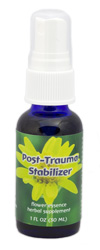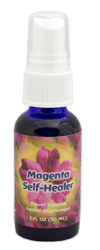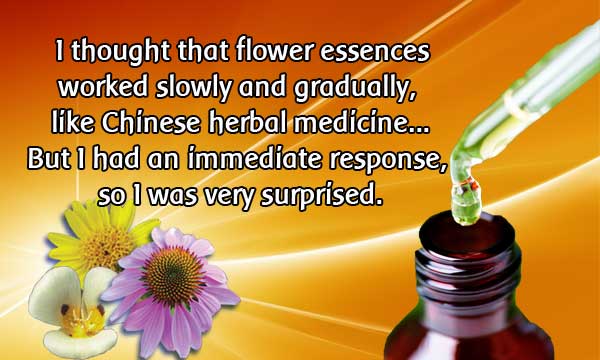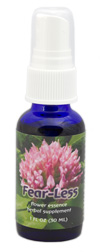|
Maintaining life after displacement from the tsunami
Reality of the disaster sets in and feelings come flooding back
Dealing with stress and anxiety as a result of the earthquake experience
Understanding complex emotions such as survivor’s guilt
Flower essence support for distress over the predicaments of family and friends
Maintaining life after displacement from the tsunami
When the earthquake struck, A was living in the Arahama district of Sendai City in Miyagi Prefecture. Her newly built house was washed away by the tsunami. Her family (husband, A, and two children) fled, carrying only the barest of necessities, and managed to survive. They lived in one evacuation center after another, and in their friends’ houses. In late March, A temporarily lived at her husband’s family home in Miyagi Prefecture.
Immediately after the earthquake, she was unable to think about the future. She had no idea what would happen to her from there on; she found the world and everything around her very unsettling.
After some time elapsed, she felt once again that the earthquake disaster had been much too great. She felt no sadness about losing her house; she has no actual feelings about it. However, she said that she could not stop crying after receiving love and acts of kindness from other people. In late March, she was able to take a nice, long bath, immersed in a bathtub, for the first time. She waited more than eight hours in a line and finally managed to put gasoline in her car. Without gasoline, she was unable to go to work and could not work. It was cold outside, so she continued to wait for her turn to fill up her car, wearing ski clothes and wrapping herself in a blanket. Since many people in the institutions were overdosed with drugs, A hoped to support them with flower essences and other natural substances.
After she obtained gasoline, A resumed her work at an institution for physically disabled people, while also helping out at the evacuation center. At her workplace, she found many people who had night and day reversed, or those who showed insomnia and symptoms caused by restlessness and anxieties. She also found that many people who were providing nursing care had become very tired. Since many people in the institutions were overdosed with drugs, she said that she had hoped to support them with flower essences and other natural substances.
By May, A was shuttling between work and home like crazy. Her children, aged 4 and 2, did not get along very well with her mother-in-law, which was a source of stress for her. The children also became increasingly anxious and nervous, so whenever A returned home, they often stuck by her and never let her go. She wanted to talk with me on the phone, but she would leave the house in the morning to go to work, and when she returned home, she had to cook meals, clean up, and take care of her children. Before she knew it, it was already midnight, so she had no free time to herself. The stress caused by living with her in-laws was gradually intensifying. She told me that being a son’s wife was tough.
Reality of the disaster sets in and feelings come flooding back In late May, A's sense of reality began sinking in about the massive scale of the earthquake damage, the fact that she had lost her house, and the sorrow of having many people die. Whenever she recalls the fear of the tsunami, and sees that the scenery she loved so dearly had been lost, her heart aches. Her body has begun showing changes at this point, such as never-ending coughs, and pain spreading from around the chest and even to her back. In early June, A relocated and began her life in a new place. She finally began to understand that a terrible thing had occurred. However, it didn’t occur just to her; people living in the same apartment were in similar circumstances, so she told her neighbors that even though they had no houses, they could somehow make do, and that they are truly lucky to be alive. Everyone there is like a family, and speaks very matter-of-factly. She said that I would be surprised to see her friends so upbeat and energetic. However, since people around her have lots of relatives who passed away, she wonders, “How would they keep on living, with what hope and support?” She sometimes feels guilty, comparing her situation with those of people around her. Any vacant space nearby is filled with makeshift housing and tents for volunteer workers. Stores and her daily life are slowly returning to normal. A's physical condition finally stabilized after being consistently plagued with back pain, coughing and a slight fever. A seemed to have perceived how wonderful flower essences really are. She told me that, once her life returns to normal, she, too, wished to study on her own and put the knowledge to use at her workplace. After July, it appeared that she had slowly begun to settle down. When I saw her again at Iwate Prefecture in September, she appeared to be in good spirits and health, showing me pictures of the place that was damaged. It seemed that she had resumed her normal life. I told her to use the flower essences about 3 to 4 times a day, and that it was okay to use it anytime she felt stress. However, it appeared that she was in a situation where she could not use it every day. It appeared that she was totally immersed in doing things immediately before her eyes, so much so that she had forgotten to use flower essences.
Still, she told me that she recalled occasionally and sprayed the essences. Although it was difficult for her to perceive any physical changes, she said that the spray relaxed her and gave her a sense of reassurance. She seemed to have mainly given Rescue to her children. Because this had a sweet taste, her children reportedly enjoyed drinking it.
Dealing with stress and anxiety as a result of the earthquake experience
B’s family of five includes her husband and three children aged 8, 6 and 3. The family lives in Miyagi Prefecture, inland. B is a nurse, and one-third of her workplace was destroyed. The earthquake did not cause major damage to her house, and no one was injured. After the earthquake, the children became increasingly anxious because of the aftershocks, and began showing physical symptoms such as stomachaches. Their stress further intensified because the open space next to her house became a morgue for placing dead bodies. Around this period, the children could not play outdoors, and became bored with playing inside the house. Bookstores did not reopen right away, so the children could not read any monthly manga magazines even though they wanted to. This led to even greater stress. After the earthquake, the children became increasingly anxious because of the aftershocks, and began showing physical symptoms such as stomachaches. I sent the children magazines and a flower essence combination which included Chamomile , Walnut , Red Clover , Mimulus , Crab Apple , and Golden Yarrow . As a result, the children’s changes and responses shifted for the better, and B’s interest and trust in flower essences grew. The changes in their environments prior to starting elementary school appeared to have increased their sense of anxiety. B said that the children experienced tension in their stomachs, as well as itchiness in their bodies and eyes that started in early spring. Their sneezing reportedly became worse. I therefore sent them cream for moisturizing the skin, together with flower essences. May: B’s stress intensified because of anxiety about lingering aftershocks; a variety of chain emails about radiation; a dramatic increase in her hospital work load; and lack of manpower. One-third of the hospital where she worked was destroyed. Yet, it accommodated injured people and transferred patients from other hospitals, so the hospital itself was full and overworked. In addition to a shortage of doctors, she continued to work hard without taking any days off.
Ordinarily, B is cheerful and optimistic, saying that things would somehow work out okay. This time, however, she complained of her poor physical and mental conditions, such as exhaustion from excessively hard work, aggravating physical conditions, and fatigue that did not go away. She was shuttling between work and her house, and the only place where she could feel relaxed was inside her car. She said that she used flower essences before starting and after work. Since she was working irregular hours, I had her contact me whenever she found it convenient. It appeared that she remained very busy, and continue to suffer from fatigue that never went away. Still, she said that she was somehow managing things. Using Himalayan rock salt which I sent to her together with the flower essences, and placing it inside the bathtub, she felt her physical fatigue ease. By using it while taking a bath, she said it warmed her body. B used flower essences during the numerous aftershocks. She felt considerably more secure by having them close at hand. She placed them inside the car or her bag, and often used them before and after work. This way, she was able to switch gears between on and off work; the essences empowered her at work. She also felt as if she could concentrate better. Although she didn’t know how to describe this, she felt amazed with the power of the flower essences. She said that she, too, wanted to study them. “I thought that flower essences worked slowly and gradually, like Chinese herbal medicine. But I had an immediate response, so I was very surprised.” Her children also actively used the flower essences, saying, “I’ll go to school after spraying the flowers on me.” They reportedly blended into their new school right away. Their stomachache and a sense of tension were eased. Understanding complex emotions such as survivor’s guilt
In April, E was extremely busy at work, cleaning up the mess at the airport and providing assistance to other places of work. Some of the people at his office had relatives or sons who died in the disaster. E did not know what to say to them. An older coworker who lost his son was making desperate efforts to act cheerfully at work; it’s painful to watch this person, and E doesn’t know what he should do. He himself is in a difficult state but it’s nothing compared to what other people are going through. He can never say that he’s having a tough time. Since he has things to do now, he is pressed at work, giving him no time to think. He’s merely spending days like this, one day after another. In May, E made a business trip to support other airports, moving from here to there. His coworkers took turns going to Fukushima Airport to help, and E is also planned to go. Before heading for Fukushima, his older brother-in-law passed away. E remembered things about this brother while he was still alive, and became overwhelmed with a feeling of regret, thinking, “If only I had seen him at that time…”
In June, E was assigned to transfer to Tokyo, so he began living by himself, leaving his family behind in Miyagi. Because his work is hard, he is currently being consumed by it. This may be better since he has no time to think about other, unnecessary things. He is desperate to get used to his new life, to the crowded commuter trains, and to his new work.
Late June: When he feels more or less settled down, he sometimes thinks about the earthquake, about his brother-in-law, and about this husband-only transfer. For the first time after the earthquake, I heard him utter, “Boy, I’m exhausted…” Immediately after the earthquake, E told me that he was commuting to the airport on a motorcycle, passing through the rubble, and that he often sprayed the YES formula. The environment at his workplace inside the airport was poor; when he works, he must wear a facial mask. He said that using the YES spray at home and at the workplace relaxed him. He added that, since the essence was a spray type, it was convenient to carry, which was good. When I emailed him, “Thank you for being alive,” he said that he felt so happy that it was OK to survive and live that he cried.
Being a man, E appeared to feel uncomfortable, circumstance-wise also, to complain about his situation to the local people or show his difficulties to them. When we talked over the phone, he said to me, “I didn’t know that having someone listen to my feelings made it easier. I want you to listen again to what I want to say.”
E, too, was a victim of the earthquake and the tsunami, and had a close relative die because of them. He was also in the midst of changes in his environment and circumstances such as being ordered to make a husband-only transfer. However, since many people were in much harsher situations than his, he tried not to show his own mental wound and suffering to people around him. I felt the need to listen to what he wanted to say, from a perspective a step away from him. I felt that there were things he found difficult to say in front of people who were in a similar situation. I made sure not to negate his emotions, and focus only on staying close to his feelings and listening to what he has to say.
Flower essence support for distress over the predicaments of family and friends
G is a midwife living in Kanagawa Prefecture. Her parents live in Miyagi Prefecture, so her close family, relatives and friends were affected by the earthquake. At the time of the earthquake: She experienced a stronger shock from seeing videos and pictures than during the earthquake disaster. She often remains dazed all day long. Even while working, she feels her heart pound; she cannot stop crying just from hearing things about Miyagi. She feels frustrated and guilty that her hometown, relatives and friends are in terrible circumstances, and she wants to do something but nothing can be done. Her fears about aftershocks and radiation keep growing by the day. During those days, G had been distressed over her job, her children, her parents, etc. So I gave her a formula consisting of Yarrow , Pink Yarrow , Golden Yarrow , Arnica , Echinacea , and Red Clover . She has been taking it since the end of March. Late April: G decided to go home to Miyagi. Since she had a strong sense of anxiety, I told her about the support available from AFEEJ, and gave Fear-Less to her.
Witnessing the enormity of the damage in Miyagi prefecture and the atrocious state of affairs, she was shocked. However, she used the spray to calm herself.
G herself said that she used the essences which gave her a sense of security. She was tremendously supported by them.
|
||
|
|

To install this Web App in your iPhone/iPad press ![]() and then Add to Home Screen.
and then Add to Home Screen.


 Essences used:
Post-Trauma Stabilizer
and
Rescue Remedy
Essences used:
Post-Trauma Stabilizer
and
Rescue Remedy





